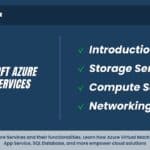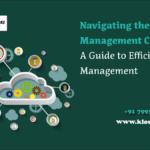Leveraging Terraform for Serverless Computing with AWS Lambda
Introduction:
AWS Lambda has revolutionized serverless computing by enabling developers to focus on code without worrying about server management. Terraform, an infrastructure-as-code tool, complements this serverless paradigm by providing a declarative approach to provisioning and managing AWS resources. In this blog, we will explore how to use Terraform to deploy and manage AWS Lambda functions effectively. By combining the power of Terraform and AWS Lambda, developers can achieve infrastructure automation, version control, scalability, and repeatable deployments.
Understanding AWS Lambda:
- Overview of AWS Lambda: Explore the key concepts and benefits of AWS Lambda, such as event-driven architecture, automatic scaling, and pay-per-use pricing model.
- Lambda Triggers and Event Sources: Learn about various triggers and event sources that can invoke Lambda functions, such as API Gateway, S3, DynamoDB, and CloudWatch Events.
- Building Lambda Functions: Understand the process of creating Lambda functions using different programming languages, configuring environment variables, and managing function versions.
Introduction to Terraform:
- What is Terraform: Gain an understanding of Terraform as an infrastructure-as-code tool that allows you to define and provision infrastructure resources across multiple cloud providers.
- Declarative Configuration: Explore the declarative approach of Terraform, where infrastructure is defined in configuration files using HashiCorp Configuration Language (HCL).
- State Management: Learn about Terraforms state management capabilities, which enable tracking and maintaining the state of deployed infrastructure resources.
Setting Up Terraform for AWS:
- Installing Terraform: Step-by-step instructions on installing Terraform and configuring your development environment.
- AWS Provider Configuration: Configure the AWS provider in Terraform to authenticate and interact with your AWS account. Understand the necessary IAM permissions.
- Managing Terraform State: Explore different approaches to managing Terraform state, including local state files, remote state storage, and the use of backend configurations.
Deploying AWS Lambda Functions with Terraform:
- Defining Lambda Function Configuration: Create a Terraform configuration file to define Lambda function properties such as function name, runtime, memory, timeout, and associated resources.
- Integrating with Event Sources: Use Terraform to configure event sources, such as S3 bucket notifications or API Gateway endpoints, to trigger the Lambda function.
- Managing Environment Variables: Understand how to define and manage environment variables for Lambda functions using Terraform, enabling dynamic configuration.
- Handling IAM Permissions: Grant appropriate IAM permissions to the Lambda function using Terraform, ensuring it has the necessary access to AWS resources.
- Provisioning Infrastructure Dependencies: Deploy any required infrastructure dependencies, such as IAM roles, security groups, or VPC configurations, using Terraform.
Infrastructure as Code Best Practices:
- Version Control: Explore the importance of version-controlling Terraform configurations and storing them in a version-control system such as Git.
- Reusable Modules: Learn how to create reusable Terraform modules to encapsulate common Lambda function configurations and promote code reuse across different projects.
- Continuous Integration and Deployment (CI/CD): Integrate Terraform with CI/CD pipelines to automate the deployment and management of Lambda functions.
Scaling and Monitoring:
- Auto Scaling: Explore how to leverage Terraform to configure auto-scaling settings for Lambda functions, ensuring efficient resource allocation based on demand.
- Logging and Monitoring: Integrate Terraform with AWS CloudWatch to set up logging and monitoring for Lambda functions, enabling real-time visibility into their performance.
Conclusion: Combining the power of AWS Lambda and Terraform enables developers to harness the benefits of serverless computing while maintaining infrastructure as code principles. In this blog, we explored the fundamentals of AWS Lambda, the features, and capabilities of Terraform, and how to deploy and manage Lambda functions using Terraform. By adopting this approach, developers can achieve automation, scalability, version control, and repeatability in their serverless deployments. Whether you are starting a new project or migrating existing workloads to AWS Lambda, terraform provides a reliable and efficient way to provision and manage your serverless infrastructure, empowering you to focus on writing code and delivering value to your users.
Frequently Asked Questions about AWS Lambda
AWS Lambda is a serverless, event-driven compute service that lets you run code for virtually any type of application or backend service without provisioning or managing servers.
- A function. This is the actual code that performs the task.
- A configuration. This specifies how your function is executed.
- An event source (optional). This is the event that triggers the function. You can trigger with several AWS services or a third-party service.
Lambda is named after functions from lambda calculus and programming
They’re commonly referred to as anonymous functions. Lambda functions are efficient whenever you want to create a function that will only contain simple expressions
The console generates a Lambda function from a single source file called lambda_function. The built-in code editor allows you to edit this file as well as add new ones.
By default, Lambda limits your account’s concurrent executions to 1,000 across all functions in an AWS Region.
AWS Lambda is a serverless compute service that runs your code in response to events and automatically manages the underlying compute resources for you.
Lambda-based applications (also referred to as serverless applications) are composed of functions triggered by events.
Sample Lambda applications in Go
go-al2 – A hello world function that returns the public IP address.
S3 Object Lambda uses AWS Lambda functions to automatically process the output of a standard S3 GET, HEAD, and LIST request.
To move a AWS Lambda function to another AWS account or region, use the AWS Command Line Interface (AWS CLI): The Lambda function deployment package can be downloaded by running the GetFunction command. Configure the AWS CLI for the second AWS account or region where you want to move the function.
API Gateway gives users a secure HTTP endpoint to call your Lambda function, and it can help manage large volumes of calls by throttling traffic and automatically validating and authorizing API calls.













